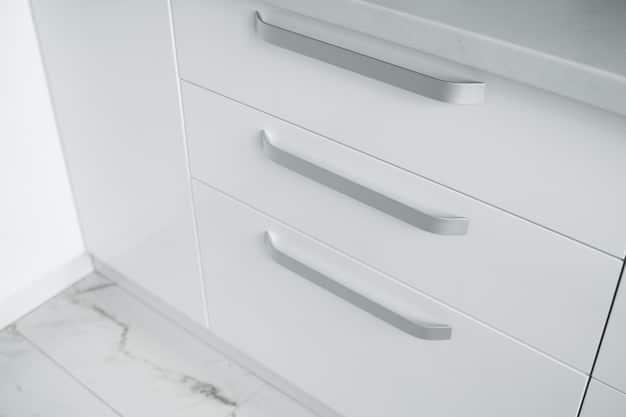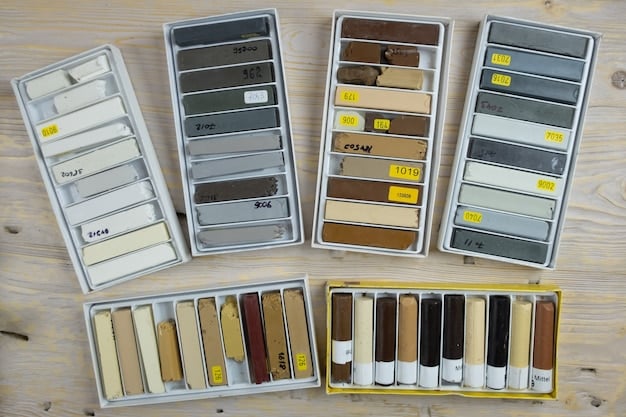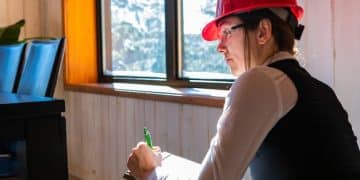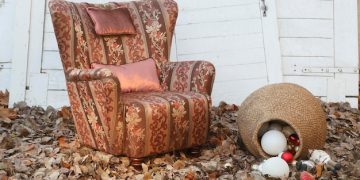DIY Kitchen Cabinet Refacing: Save Big with Insider Tips

DIY kitchen cabinet refacing is a cost-effective way to revamp your kitchen, typically saving around 60% compared to full replacement, while allowing for significant personalization and style updates using various techniques and materials.
Dreaming of a kitchen makeover but dreading the hefty price tag of new cabinets? DIY kitchen cabinet refacing: Save 60% Compared to Replacement (Insider Tips Included) offers a fantastic alternative. Transform your kitchen on a budget!
DIY Kitchen Cabinet Refacing: Is It Right for You?
Kitchen renovations can be expensive, and replacing cabinets often represents a large part of the cost. However, if your existing cabinet boxes are structurally sound, DIY kitchen cabinet refacing can be a viable and significantly cheaper option. But how do you know if refacing is the right choice for your kitchen?
Before diving into a refacing project, assess the condition of your existing cabinetry. This is crucial. Are the frames solid, and the layout functional? Lets take a look.
Assessing Your Cabinet Structure
The primary condition for refacing is having sound cabinet boxes. Check for the following:
- Solid Construction: The cabinet boxes should be made from sturdy material, like plywood or solid wood.
- Square and Level: Ensure the cabinets are square and level. If they are significantly out of shape, refacing becomes more complicated.
- Functional Layout: If you’re happy with the existing layout of your kitchen, refacing is perfect. But, if you want to change your layout a full replacement is the best option.
If your cabinets meet these criteria, you’re in a good position to consider DIY kitchen cabinet refacing.
Ultimately, determining whether to reface your kitchen cabinets involves carefully evaluating the condition of your current cabinets and your long-term kitchen goals.
Refacing vs. Replacing: Understanding the Cost Savings
One of the most compelling reasons to consider DIY kitchen cabinet refacing is the potential for substantial cost savings. Replacing cabinets can be one of the most expensive parts of a kitchen remodel. But how much can you save, exactly, by opting for refacing?
The cost difference between refacing and replacing is significant, with refacing frequently resulting in savings of up to 60-70%. Here’s a detailed breakdown of the financial aspects involved.
Comparing Costs
Let’s break down these cost comparisons:
- Material Costs: Refacing materials and installation are far less than new cabinet costs.
- Labor Costs: Labor costs are much lower with refacing, which involves less demolition and installation time.
- Additional Savings: You avoid additional expenses associated with modifying layouts and other construction work!
By choosing DIY kitchen cabinet refacing, you keep the heart of your kitchen intact while giving it a fresh, new exterior.
The considerable savings offered by refacing make it an appealing choice for homeowners looking to update their kitchens without breaking the bank.
Essential Tools and Materials for DIY Refacing
Embarking on a DIY kitchen cabinet refacing project requires careful planning and preparation. Gathering the correct tools and materials ensures a smoother, more efficient process. Knowing what you need beforehand will set you up for success. So, let’s get prepared.
From measuring tools to finishing products, having the right equipment will dictate the quality of your refacing project. The first step is getting the right tools on hand.

Tools You’ll Need
- Measuring Tape: Essential for accurate measurements.
- Screwdriver/Drill: For removing old hardware and installing new hardware.
- Sander: For smoothing surfaces.
- Utility Knife: Useful for trimming veneer.
Equipping yourself with these tools will ensure you’re well-prepared for the tasks involved in DIY kitchen cabinet refacing. If this is something you like doing, this process will be very enjoyable!
Preparing your kitchen with the correct tools on hand before starting will ensure a seamless and successful refacing project.
Step-by-Step Guide to Refacing Your Kitchen Cabinets
With the right tools and materials at hand, you’re ready to start the refacing process. Refacing your kitchen cabinets involves several key steps, each requiring precision and care. Lets go through all the steps.
Following these steps carefully ensures a professional-looking result. The right steps can assure a seamless transformation and a kitchen you’ll love.
Detailed Instructions
Follow our instructions carefully:
- Preparation: Clean the cabinet thoroughly. This is the first, and most important step. Get rid of the dirt and debris!
- Veneer Application: Apply the veneer to the sides using adhesive.
- Hardware Installation: Install new hinges, knobs, and pulls for a updated finish.
Precision in each step ensures a seamless, professional update to your kitchen.
Taking a step-by-step approach and paying high attention to detail is key in a successful DIY kitchen cabinet refacing project.
Choosing the Right Materials and Finishes
The materials and finishes you choose will profoundly impact the final look of your refaced cabinets. From the color and style of the veneer to the type of hardware you select, each element contributes to your kitchen’s overall aesthetic. Choosing the right materials can have a huge impact.
Consider your kitchen’s existing style and choose materials that complement your home’s existing decor. By making wise choices that reflect your personal style, you can achieve a kitchen that you’ll love.
Material Options
- Wood Veneer: Provides a classic look with different wood species.
- Laminate: Offers greater durability and moisture resistance.
- Rigid Thermofoil (RTF): Durable and easy to maintain.
Selecting materials that fit both your budget and design preferences is key to a successful refacing project.
Careful selection of materials ensures that your refaced cabinets not only look fantastic but also stand the test of time, seamlessly blending with your kitchen’s overall aesthetic.

Adding Value and Personal Touches
Beyond the basics, adding personal touches can make your refaced kitchen cabinets truly unique. Simple upgrades such as installing new door styles and adding unique hardware can elevate the entire room. Get original with it.
Personalizing your cabinets is about more than just aesthetics; it’s about creating a space that reflects your lifestyle and tastes. The perfect personal touch can make a huge difference.
Creative Upgrades
- New Door Styles: Flat-panel, shaker, raised. There are so many different options to choose from.
- Decorative Hardware: A wide selection of knobs and pulls can significantly impact the look of your new cabinets.
- Interior Lighting: Under-cabinet lighting can significantly enhance functionality. This can add a great level of complexity.
These upgrades will help add more value and uniqueness to your renovated kitchen!
By integrating these elements, you will have a kitchen that not only looks fantastic but also enhances your daily living experience.
Maintaining Your Refaced Cabinets for Longevity
After you’ve completed your DIY kitchen cabinet refacing project, proper maintenance is essential to ensure your new cabinets last for years. Like anything else, a long life requires proper care.
Maintaining your cabinets involves regular care and protection to prevent damage. Lets go over some tips to make sure your kitchen lasts a long time.
Care & Protection
- Regular Cleaning: Wipe down cabinets with a damp cloth to remove dirt. This is important for any kitchen.
- Avoid Harsh Chemicals: Use mild, non-abrasive cleaners to avoid damage.
- Touch up: Use touch up paint or wood filler on any damages. This will make it look brand new again!
This will help prolong the life of your cabinets, and also keep them looking new!
Consistent upkeep not only preserves the aesthetic appeal of your kitchen but also ensures your investment remains a beautiful and functional part of your home for years to come.
| Key Point | Brief Description |
|---|---|
| 💰 Cost Savings | Refacing saves up to 60% compared to full replacement. |
| 🛠️ Essential Tools | Includes measuring tape, screwdriver, sander, and utility knife. |
| ✨ Material Choice | Options include wood veneer, laminate, and RTF for durability. |
| 💡 Personal Touches | Upgrade with new doors, decorative hardware, and lighting. |
Frequently Asked Questions Section
▼
Refacing involves replacing the doors and drawer fronts while covering the cabinet boxes with a new veneer. This offers a fresh look without altering the existing cabinet structure.
▼
Homeowners can often save roughly 60% – 70% by choosing to reface their existing cabinets rather than ripping them out and installing completely new ones.
▼
Refacing can be a DIY project for those comfortable with home improvements. However, professional installation ensures high-quality results and can save time.
▼
For maximum durability, consider rigid thermofoil (RTF) or high-quality laminates. They resist moisture, scratches, and everyday wear and tear effectively.
▼
Regularly clean with mild soap and water, avoid harsh chemicals, and promptly repair any damages to the veneer or edges to extend their lifespan.
Conclusion
In conclusion, DIY kitchen cabinet refacing is a transformative and cost-effective solution for homeowners looking to update their kitchens without incurring the high costs of a full replacement. By carefully assessing your current cabinets, selecting the right materials, and taking a step-by-step approach, you can achieve a beautiful, updated kitchen that adds value to your home. Keep in mind longevity is the key, by properly taking care of your new cabinets, they will last you for years and years.




